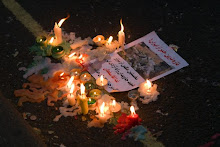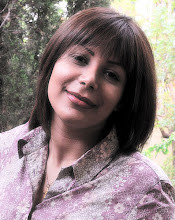Saturday, Januaray 27th, saw the Think Tank Party. Now I know that sounds like a contradiction in terms, but it was a party of sorts. Perhaps more plotting than partying, more networking than thinking, but hey, they tried. And I tried too.
This too was staged at a venerable institution of planet C, commonly known as Contemporary Applied Arts, or the CAA. It lurks on the north side of Oxford St. in central London, and sells things, most of the time. That, at least, is its purpose, and as far as I know, it acquits itself admirably, or is doing so now after a bad patch, by all accounts.
One day, I promise, The C Word will delve into the sordid underbelly of the Craft’s political/social (?) economy, and find who exactly does fund who and who knows who, taught who, is propped up by who, and how the whole ghastly closed-shop edifice is constructed and maintained, and how the hegemonic practices, of ceramics in particular, are hedged in, protected, regularly clipped, and by whom. But that could take a while, and is a digression from our current concerns with the TANK.
link to website here
Think Tank, for those not in the know, was dreamed up about four years ago, in a small Austrian town called Gmunden, by one Gabi Dewald, who invited ‘some of the most committed thinkers in the field of applied art from right across Europe’ to ‘lay a theoretical foundation for the concept of the applied art in Europe today.’ My guess is we’re now about half way through Think Tank’s natural life span. They’ve produced four publications, three of which have accompanied exhibitions, which themselves respond to a concept, which is discussed in the seminar papers published in the books. The first of the three exhibitions, and therefore the title of the collected, published papers, was called ‘Languages’; the second was ‘Place(s)’; the third, ‘Gift’. The first of the publications was called ‘The Foundation,’ in which the contributors discussed their reasons for participating in Think Tank and what they considered the purpose of the beast to be. So, Gift was the exhibition hosted at the CAA, whose papers are now published in the book of the same name. Ok so far?
Word on the craft corridor is that the Tank members each chose a piece of work they like, and want to talk about in terms of the proscribed concept, pop it in their handbags, bring it to the exhibition space and lob it on a plinth. I imagine the process isn’t quite as cavalier as this, this is simply what my, probably rather unreliable, source told me, but the point is that the shows are curated by the members (nine writers from eight countries) and assembled in situ. In other words the curatorial process is predicated on the concept, almost as though the concept, ‘gift’ in this case, does the curating, or at least has the casting vote. Make no mistake, this has produced some wonderful shows. That said, the last two, Gift and Place(s), has had a cobbled together look. The first time, it felt like a welcome break from the preciousness of craft curating. The second time, it’s starting to look like a bad habit.
One of the most important things about these shows is the writing, which also appears in the gallery space with each of the objects exhibited. These are the thoughts of the individual who chose that piece in response to the concept. Place(s) and Gift both were shown at the CAA, and in both shows, the objects were set out on big white plinths with typed statements next to them. As I said it looked clunky but home made and interesting the first time. Now I want to see the writing look like it really is part of the show. I want to see it curated. I love what Think Tank does and I don’t want it to be part of miserable little note left in a survey of craft centred art practices. So, I’m hoping for a LOT MORE punch in the next show. It still has the small-but-perfectly-formed-objects look to it, but that may just be what the Thinkers like. No disrespect intended to the makers here, the ‘look’ is what happens when you put them all together. I’d like to see all this seminar-ing and laying of theoretical foundations to have some real weight which is made visible, and indeed material, in the exhibitions themselves.
Subscribe to:
Post Comments (Atom)












































No comments:
Post a Comment